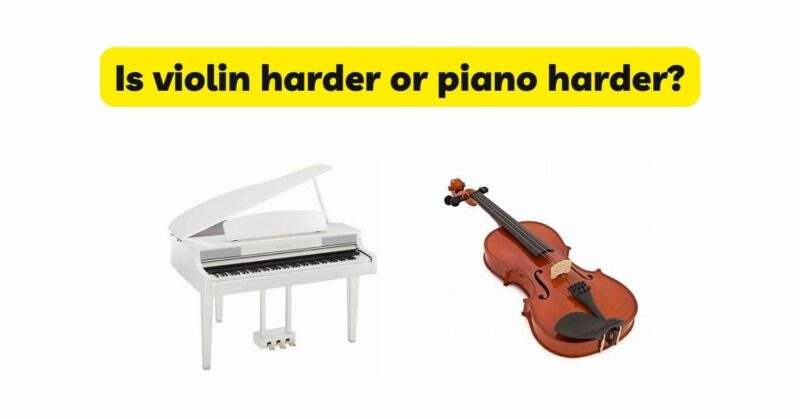The question of whether the violin or the piano is harder to learn is a subject of much debate among musicians and aspiring learners. Both instruments require dedication, practice, and a certain level of musicality to master. In this article, we will delve into the unique challenges posed by each instrument and explore the factors that contribute to the perceived difficulty of learning the violin and the piano. By examining technical aspects, musicality requirements, physical demands, and individual preferences, we aim to provide a balanced perspective on the question of which instrument is harder to learn.
- Technical Challenges: The violin and the piano present different sets of technical challenges. The violin requires a complex combination of bowing, fingering, and intonation, demanding precise control over finger placement and bowing technique. Learning to produce a clear and resonant sound on the violin requires careful attention to bow speed, pressure, and contact point. On the other hand, the piano demands coordinated finger movements, hand independence, and accurate note reading. Mastering piano technique involves developing agility, strength, and flexibility in the fingers, as well as control over dynamics and articulation. Both instruments require disciplined practice to achieve technical proficiency, but the specific challenges may vary depending on individual aptitude and experience.
- Musicality and Expression: Musicality and expression are integral to both the violin and the piano. However, the nature of expression differs between the two instruments. The violin offers a wide range of expressive possibilities through bowing techniques, vibrato, and nuanced finger placement. It requires a keen ear for intonation, tone production, and phrasing to convey emotions effectively. The piano, with its broader dynamic range and polyphonic capabilities, allows for complex harmonies, chords, and melodic lines. Expressing nuances in dynamics, articulation, and balance is essential for conveying musical ideas on the piano. The challenges of musicality and expression are inherent to both instruments, and the perceived difficulty may vary based on personal preferences and strengths.
- Physical Demands: Physical demands play a role in assessing the difficulty of an instrument. The violin requires proper posture, balance, and muscle control. Holding the violin under the chin, maintaining a relaxed and stable bowing arm, and executing precise finger movements can be physically demanding, especially for beginners. In contrast, the piano demands finger dexterity, hand independence, and coordination. The repetitive motion of playing the piano can also pose challenges, as it requires finger strength and stamina to navigate the keys. While both instruments have physical demands, the extent and nature of these demands may differ, making it subjective to determine which instrument is harder based on physicality alone.
- Individual Aptitude and Learning Preferences: Individual aptitude and learning preferences are crucial factors in determining the perceived difficulty of learning an instrument. Each person has unique strengths, weaknesses, and preferences when it comes to musical instruments. Some individuals may have a natural affinity for the physicality and technique required by the violin, while others may find the tactile nature of the piano more accessible. Learning styles and preferences also play a significant role. Some individuals may thrive in the structured learning approach of the piano, while others may enjoy the freedom and expressiveness of the violin. It is essential to consider individual aptitude and personal preferences when assessing the difficulty of learning either instrument.
- Commitment and Practice: Ultimately, the difficulty of learning an instrument boils down to one’s commitment and dedication to consistent practice. Both the violin and the piano require regular, focused practice to progress and develop proficiency. The amount of time and effort invested in practice is a determining factor in mastering either instrument. Consistency, perseverance, and a growth mindset are essential for overcoming challenges and reaching one’s musical goals, regardless of the instrument chosen.
Conclusion: The question of whether the violin or the piano is harder to learn does not have a definitive answer. Both instruments present unique challenges, technical demands, and opportunities for musical expression. The perceived difficulty may vary depending on individual aptitude, physicality, musicality, and learning preferences. Ultimately, the key to success lies in commitment, consistent practice, and a love for music. Whether you choose to embark on the journey of learning the violin or the piano, embrace the challenges, seek guidance from qualified instructors, and immerse yourself in the joy of music-making. Remember that the rewards of mastering either instrument far outweigh the initial perceived difficulty.


